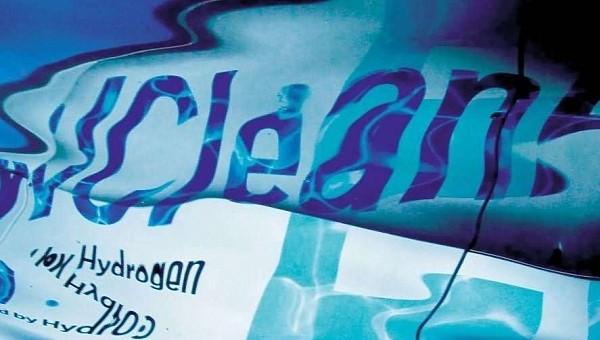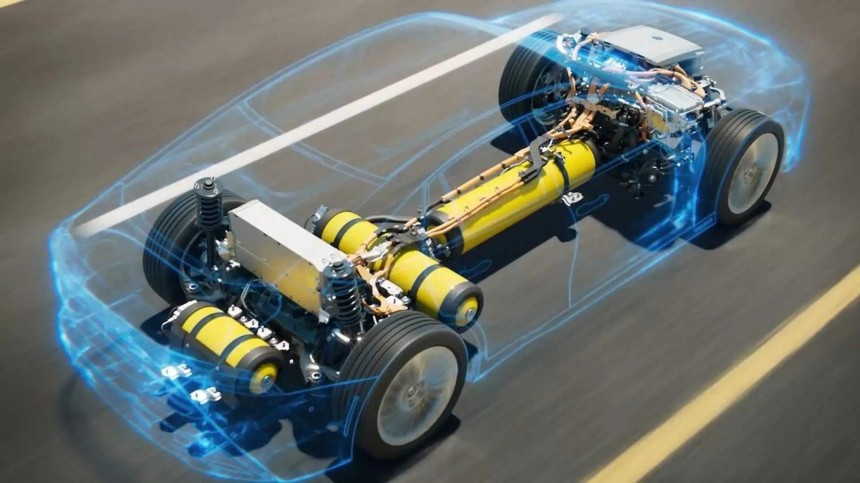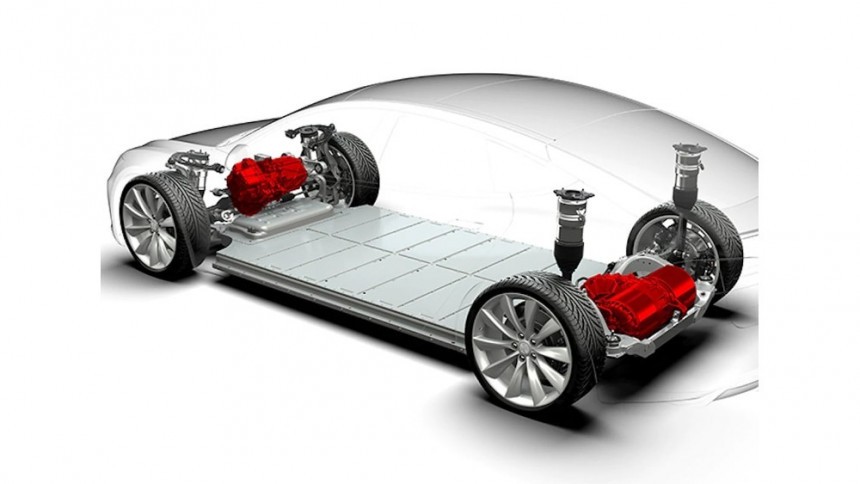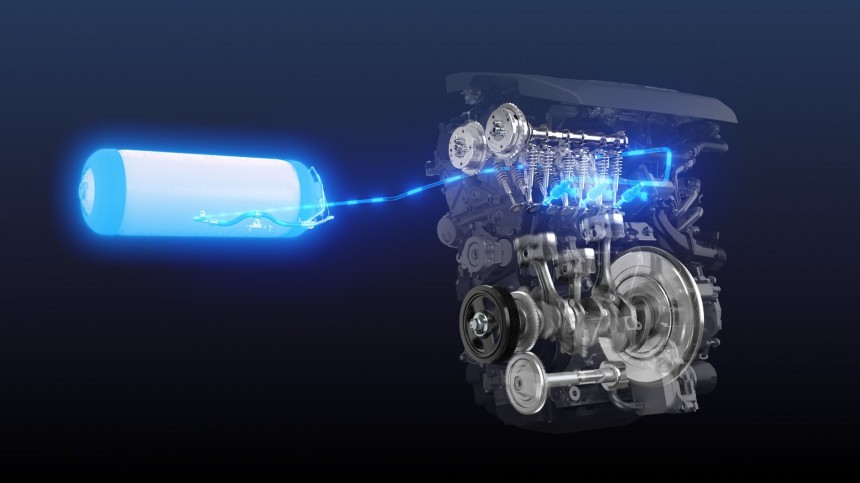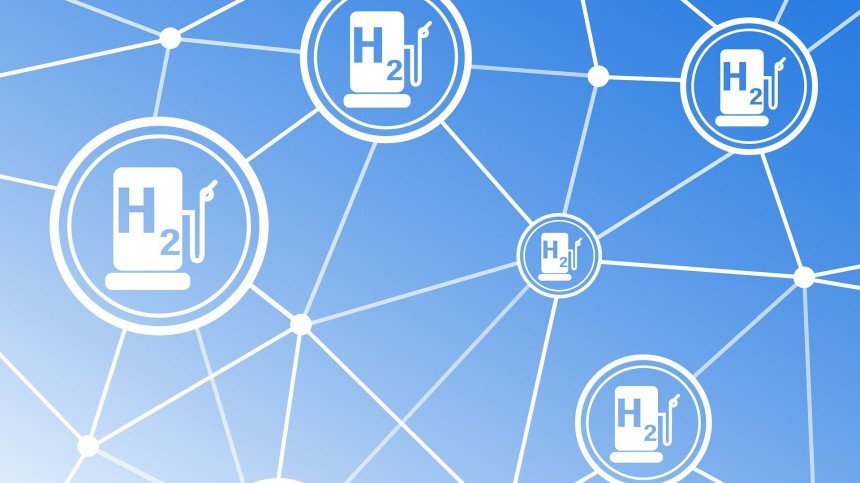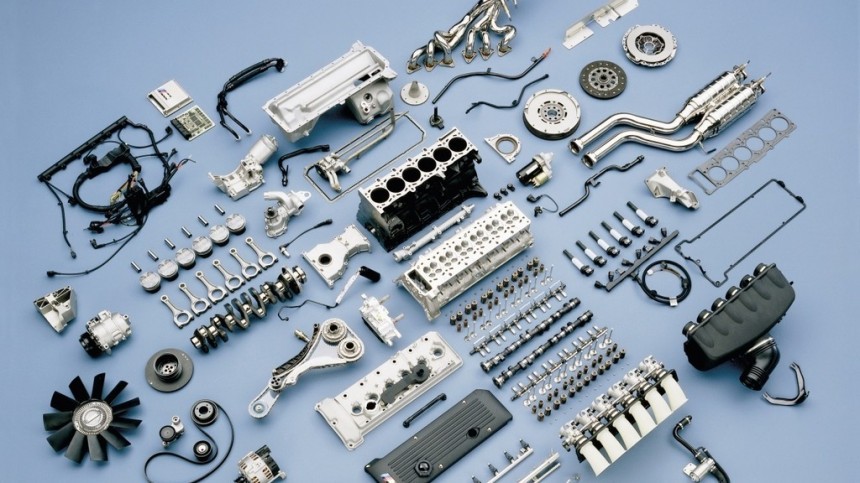There are more and more breakthroughs headlines related to hydrogen and fuel-cell technology. So the question arises: “Why do we invest hundreds of billions of dollars in batteries instead of hydrogen?” It sounds like electromobility could be a mistake. It’s a messy green conflict. And we’re briefly trying to shed some light.
When talking about electric cars, the first name that comes to mind is Tesla, of course. Who invented the very first battery electric vehicle no longer matters. FYI: Robert Anderson created the first sort-of-electric-car around 1832.
It’s almost the same story for hydrogen. Nobody knows the first hydrogen-powered vehicle was the GM’s 1966 prototype Electrovan Fuel Cell. Today the H2 stars are Toyota Mirai and Hyundai Nexo or Nikola in the trucks sector.
History might seem obsolete for the third millennium. It’s already 137 years since Benz filed the patent for the first internal combustion engine car. And it seemed that the ICE is here to stay forever.
Both batteries and hydrogen are meant to reduce or even erase pollution and emissions in the transportation sector. Nasty pollutants and GHG emissions have been released into Earth’s atmosphere for more than a century by internal combustion engines fed by petroleum fuels.
Driving an ICE car results in harmful emissions spewed by its pipeline: CO2, NOx, fine particles, VOC, CO, SO2, and so on. Driving a battery EV results in no pollutants whatsoever. Driving an H2 car results solely in water vapors (H2O).
When driving, both electric and hydrogen cars are labeled with zero emissions. So it’s only natural for ICEs to be replaced by them. But which one of these two technologies is the best?
greed business, after all.
Unfortunately, that question is crucial because we have little time to completely change our transportation system before climate change reaches the point of existential threat. Please, don't try to lure me into debunking the “is this climate change thing even real?” conspiracy.
Whether we like it or not, trillions of dollars must be invested in research, scaling, and infrastructure by 2050 at the latest. So the real question is: which one of these two technologies must be prioritized?
Battery electric vehicles are not a perfect solution, but, despite the drawbacks, electromobility cuts almost in half the ICE's pollution. It turns out that EVs are much more a part of the solution than a part of the problem.
And this is bad news for the oil industry, as more than half of black gold is used by transportation. Therefore, Big Oil shows a strong opposition to electromobility. And sometimes, it looks like a conspiracy, but it’s all for the greater good: humongous profits.
Firstly, hydrogen is mainly produced by steam methane reforming. So, it’s sourced from natural gas, a fossil fuel that tends to replace both coal and oil. Why? Because somehow it got labeled as a green fuel.
Secondly, a hydrogen-based transport system has a very similar infrastructure as today’s oil-based, which means fewer investments than EV charging points. Or so they claim, the oil companies.
Add to this that the driver doesn’t have to change refueling habits, which is a very strong selling point over BEVs. Just like the longer range of an H2 car compared to an electric car.
Forgive my circumspect opinion related to the fossil fuels industry’s big interest in hydrogen. It has almost nothing to do with long-term sustainability. It’s simply a way to keep an economic monopoly. No conspiracy mystery here.
This is a potent greenhouse gas that is more than 25 times more effective than CO2 at trapping heat in the atmosphere. So it’s only logical to presume that humanity should stay away from this menace. Well, this logic is in vain, actually.
The main sources of methane today are fugitive emissions in gas, oil, and coal exploitation, including transportation and storage. You should know that these uncontrolled emissions are even higher in shale gas and oil sites.
The industry’s estimates back in the 2010s were around 1% of total fossil fuel production. Today, these estimates for methane uncontrolled emissions are 10%. It doesn’t seem much, but the percentage represents a third of all the methane sources on the planet.
Scientists are expecting even worse. For instance, NASA’s EMIT mission, installed on the International Space Station in July 2022, is already monitoring lots of industrial sources that emit methane at much higher rates than reported.
One thing is for sure: continuing to release big amounts of methane into the atmosphere is the dumbest thing we could do. Accordingly, using natural gas for sourcing hydrogen is much worse than the environmental impact of mining raw materials for EV batteries.
It looks like policymakers are taking these facts into account. That’s why subsidies are pouring towards EVs and charging infrastructure, while funds for hydrogen are now directed to intensive research of more efficient ways to obtain really sustainable green hydrogen.
In a hybrid like Prius, the ICE generates electricity, which is stored in the battery, which feeds the electric motor that moves the car. In the Tucson FCEV, the ICE was replaced by a fuel-cell system generating electricity from the hydrogen stored in several tanks.
There you are: the fuel-cell system and the hydrogen tanks were basically a range-extender system, while the battery was smaller than an all-electric comparable-sized SUV would need.
In short, a fuel-cell car is a more complicated electric car. And more expensive. At that time, the price of that Tucson FCEV was a six figures bill because the fuel-cell system was very pricey.
It used precious metals like platinum, while cell parts manufacturing and assembly were very costly. The same story goes for the high-pressure tanks, which had to store the hydrogen extra safely so it wouldn’t blow up. Yup, the risk was much higher than that of an EV’s battery catching fire.
A decade later, hydrogen technology improved, costs were slashed, performance is better, and safety is higher. For instance, Hyundai Nexo is now around $60,000 (or 57.000 euros), way less expensive than its 2011 predecessor. Meanwhile, the Toyota Mirai starts from around $50,000 (or 47.000 euros).
These values are on par with comparable electric vehicles, while the range is better, and refueling times are much shorter than those of EV charging. The only major drawback - the fueling infrastructure is very scarce for now.
Twelve years ago, the first commercial mass-production EVs had the same problem. Since then, charging points infrastructure spread exponentially. So maybe it’s just a matter of time before the number of hydrogen stations grows.
But we’re not there just yet – to the point where all of these are economically feasible and rapidly scalable. Hyundai and Toyota FCEVs are still more expensive to produce than their selling prices, and hydrogen stations are far more complex than EV charging points.
By comparison, batteries and electric cars improved a lot in the last decade, and the rate of innovation is very promising. Besides, more renewable energy leads to cleaner EVs. That’s why today, every carmaker is into electrification.
But only a few (Toyota, BMW, or Hyundai-KIA) still hope to reap the rewards of their huge investments in H2 technology. It is more about the 'not keeping all the eggs in the same basket' business strategy, but we’re still hoping for payoffs.
Now it's Toyota's turn to try it again, but the Japanese still have a long way to go because of huge technical challenges. After all, burning hydrogen is more rocket science than car science. Ask NASA or SpaceX, they might know something about it.
It looks a little like a workaround to a real social problem: millions of workers will lose their jobs in the next decade because of combustion engines phasing out. At least this is one of the major complaints of car companies, when they try to convince policymakers to extend the deadline for ICEs.
It’s unfortunate, but electricity wasn’t the result of continuously improving the candle. It simply replaced the candle because it was better and more efficient. And those who were making candles lost their jobs, too. Or they had to adapt – today scented candles are good business, for instance.
Still, Toyota’s engineers have a point: there are around 1.5 billion ICE vehicles in the world, which are fed by pollutant petroleum fuels. If we could switch them to green hydrogen, we could slash pollution even more than EVs could.
It sounds wonderful, but technical conversion is hardly workable. I mean, those hydrogen tanks are nothing like converting your gasoline car to use LPG. And the needed overhaul of the engine would probably cost more than an EV. The chances are too low.
Let’s not forget the competition from the CO2-based e-fuels. They are a promising and reasonably-cost solution, as advertised by the auto industry. Hey, this is petrolheads' hope for the survival of internal combustion engines!
Also, heavy transport faces much bigger pollution problems. And it could be solved more efficiently using large-scale hydrogen applications than batteries.
I agree with those who don’t see hydrogen as a feasible proposition for cars in the foreseeable future. Maybe I’m wrong, and time will tell. But time is also in favor of battery evolution.
For instance, new solid-state battery tech is really promising. And it’s just around the corner. Before the end of this decade, they will spread like crazy, I’m sure. But I’m not a fortune teller, so I’ll take it back. For now.
Analysts and even car makers estimate that a vast network of charging stations is maybe ten times less costly to implement than hydrogen refueling stations. It’s the opposite of what oil companies are telling us, so who’s right?
Numbers show that upgrading the existing electrical grid is much easier and less costly than converting the existing gas stations’ infrastructure into a hydrogen one.
How about the cost of sustainable electricity and hydrogen? Green hydrogen is the result of electrolysis – the separation of hydrogen and oxygen from water. It’s a very energy-intensive process. In order to make it economically feasible at scale, we need a lot more renewable energy.
But this again is more in favor of electric cars: less and less dirty grid leads to a greener and greener EV. It makes more sense to invest heavily in renewables so that everything using electricity – cars, laptops, phones, and so on – will have a smaller carbon footprint.
An electric car makes more sense than a hydrogen car. The same as a hydrogen truck makes more sense than an electric truck.
This is to say that the two technologies are not rivals (this is merely a lobby trick) but complementary, in different areas. It’s a win-win scenario for the entire transport sector as long as we’re not debating in war terms.
There is this saying “where two fight, the third one wins”. It’s bad news for all of us if internal combustion engines are the winner, really.
It’s almost the same story for hydrogen. Nobody knows the first hydrogen-powered vehicle was the GM’s 1966 prototype Electrovan Fuel Cell. Today the H2 stars are Toyota Mirai and Hyundai Nexo or Nikola in the trucks sector.
History might seem obsolete for the third millennium. It’s already 137 years since Benz filed the patent for the first internal combustion engine car. And it seemed that the ICE is here to stay forever.
Let’s start with this: we have to ditch ICEs
Why do you think the car industry has been showing, for some time, an interest in alternative means of propulsion, like battery electric and hydrogen-fueled vehicles? Maybe history is teaching us a harsh lesson about ICEs.Both batteries and hydrogen are meant to reduce or even erase pollution and emissions in the transportation sector. Nasty pollutants and GHG emissions have been released into Earth’s atmosphere for more than a century by internal combustion engines fed by petroleum fuels.
When driving, both electric and hydrogen cars are labeled with zero emissions. So it’s only natural for ICEs to be replaced by them. But which one of these two technologies is the best?
Let’s get the conspiracy subject out of the way
“Which one is the best?” is a tricky question. The longer it takes for batteries and hydrogen technologies to become workable and replace fossil fuels, the better it is for business as usual in the oil industry. It may seem like a conspiracy to some, but it’s simplyUnfortunately, that question is crucial because we have little time to completely change our transportation system before climate change reaches the point of existential threat. Please, don't try to lure me into debunking the “is this climate change thing even real?” conspiracy.
Whether we like it or not, trillions of dollars must be invested in research, scaling, and infrastructure by 2050 at the latest. So the real question is: which one of these two technologies must be prioritized?
Battery electric vehicles are not a perfect solution, but, despite the drawbacks, electromobility cuts almost in half the ICE's pollution. It turns out that EVs are much more a part of the solution than a part of the problem.
And this is bad news for the oil industry, as more than half of black gold is used by transportation. Therefore, Big Oil shows a strong opposition to electromobility. And sometimes, it looks like a conspiracy, but it’s all for the greater good: humongous profits.
Let’s understand why Big Oil is lobbying for hydrogen
You may think that the oil industry fears hydrogen technology as much as it fears electromobility. But you’d be so wrong. There are two main reasons for Big Oil to advocate for H2.Firstly, hydrogen is mainly produced by steam methane reforming. So, it’s sourced from natural gas, a fossil fuel that tends to replace both coal and oil. Why? Because somehow it got labeled as a green fuel.
Add to this that the driver doesn’t have to change refueling habits, which is a very strong selling point over BEVs. Just like the longer range of an H2 car compared to an electric car.
Forgive my circumspect opinion related to the fossil fuels industry’s big interest in hydrogen. It has almost nothing to do with long-term sustainability. It’s simply a way to keep an economic monopoly. No conspiracy mystery here.
Let’s take the related pollution into account
While it’s true that burning hydrogen results in no harmful emissions, the same cannot be said about how it’s made. We’ve previously seen that most of it is sourced from natural gas, which has a huge drawback: its primary component is methane (CH4).This is a potent greenhouse gas that is more than 25 times more effective than CO2 at trapping heat in the atmosphere. So it’s only logical to presume that humanity should stay away from this menace. Well, this logic is in vain, actually.
The main sources of methane today are fugitive emissions in gas, oil, and coal exploitation, including transportation and storage. You should know that these uncontrolled emissions are even higher in shale gas and oil sites.
The industry’s estimates back in the 2010s were around 1% of total fossil fuel production. Today, these estimates for methane uncontrolled emissions are 10%. It doesn’t seem much, but the percentage represents a third of all the methane sources on the planet.
One thing is for sure: continuing to release big amounts of methane into the atmosphere is the dumbest thing we could do. Accordingly, using natural gas for sourcing hydrogen is much worse than the environmental impact of mining raw materials for EV batteries.
It looks like policymakers are taking these facts into account. That’s why subsidies are pouring towards EVs and charging infrastructure, while funds for hydrogen are now directed to intensive research of more efficient ways to obtain really sustainable green hydrogen.
Let’s see what a fuel-cell car is really all about
Back in 2011, I tested the Hyundai ix35/Tucson FCEV, the first commercially mass-produced hydrogen-powered vehicle in the world. But I can’t brag about it because it was kind of a disappointing experience. It lacked the “wow” factor and I simply felt like driving a very normal electric SUV.In a hybrid like Prius, the ICE generates electricity, which is stored in the battery, which feeds the electric motor that moves the car. In the Tucson FCEV, the ICE was replaced by a fuel-cell system generating electricity from the hydrogen stored in several tanks.
There you are: the fuel-cell system and the hydrogen tanks were basically a range-extender system, while the battery was smaller than an all-electric comparable-sized SUV would need.
It used precious metals like platinum, while cell parts manufacturing and assembly were very costly. The same story goes for the high-pressure tanks, which had to store the hydrogen extra safely so it wouldn’t blow up. Yup, the risk was much higher than that of an EV’s battery catching fire.
A decade later, hydrogen technology improved, costs were slashed, performance is better, and safety is higher. For instance, Hyundai Nexo is now around $60,000 (or 57.000 euros), way less expensive than its 2011 predecessor. Meanwhile, the Toyota Mirai starts from around $50,000 (or 47.000 euros).
These values are on par with comparable electric vehicles, while the range is better, and refueling times are much shorter than those of EV charging. The only major drawback - the fueling infrastructure is very scarce for now.
Twelve years ago, the first commercial mass-production EVs had the same problem. Since then, charging points infrastructure spread exponentially. So maybe it’s just a matter of time before the number of hydrogen stations grows.
But we’re not there just yet – to the point where all of these are economically feasible and rapidly scalable. Hyundai and Toyota FCEVs are still more expensive to produce than their selling prices, and hydrogen stations are far more complex than EV charging points.
But only a few (Toyota, BMW, or Hyundai-KIA) still hope to reap the rewards of their huge investments in H2 technology. It is more about the 'not keeping all the eggs in the same basket' business strategy, but we’re still hoping for payoffs.
Let’s try another approach for using hydrogen in cars
Fuel-cell technology in cars is not workable yet. How about burning hydrogen directly into combustion engines? BMW and GM first tried this almost 20 years ago but dropped the idea.Now it's Toyota's turn to try it again, but the Japanese still have a long way to go because of huge technical challenges. After all, burning hydrogen is more rocket science than car science. Ask NASA or SpaceX, they might know something about it.
It looks a little like a workaround to a real social problem: millions of workers will lose their jobs in the next decade because of combustion engines phasing out. At least this is one of the major complaints of car companies, when they try to convince policymakers to extend the deadline for ICEs.
It’s unfortunate, but electricity wasn’t the result of continuously improving the candle. It simply replaced the candle because it was better and more efficient. And those who were making candles lost their jobs, too. Or they had to adapt – today scented candles are good business, for instance.
Still, Toyota’s engineers have a point: there are around 1.5 billion ICE vehicles in the world, which are fed by pollutant petroleum fuels. If we could switch them to green hydrogen, we could slash pollution even more than EVs could.
Let’s not forget the competition from the CO2-based e-fuels. They are a promising and reasonably-cost solution, as advertised by the auto industry. Hey, this is petrolheads' hope for the survival of internal combustion engines!
Let’s draw a conclusion. Or at least let’s try
Don’t get me wrong, I really think hydrogen is a real solution for the transport sector. For heavy transport, like trucks, trains, ships, and airplanes. In this case, the economics are different than for passenger cars and light-duty vehicles.Also, heavy transport faces much bigger pollution problems. And it could be solved more efficiently using large-scale hydrogen applications than batteries.
I agree with those who don’t see hydrogen as a feasible proposition for cars in the foreseeable future. Maybe I’m wrong, and time will tell. But time is also in favor of battery evolution.
For instance, new solid-state battery tech is really promising. And it’s just around the corner. Before the end of this decade, they will spread like crazy, I’m sure. But I’m not a fortune teller, so I’ll take it back. For now.
Analysts and even car makers estimate that a vast network of charging stations is maybe ten times less costly to implement than hydrogen refueling stations. It’s the opposite of what oil companies are telling us, so who’s right?
How about the cost of sustainable electricity and hydrogen? Green hydrogen is the result of electrolysis – the separation of hydrogen and oxygen from water. It’s a very energy-intensive process. In order to make it economically feasible at scale, we need a lot more renewable energy.
But this again is more in favor of electric cars: less and less dirty grid leads to a greener and greener EV. It makes more sense to invest heavily in renewables so that everything using electricity – cars, laptops, phones, and so on – will have a smaller carbon footprint.
An electric car makes more sense than a hydrogen car. The same as a hydrogen truck makes more sense than an electric truck.
This is to say that the two technologies are not rivals (this is merely a lobby trick) but complementary, in different areas. It’s a win-win scenario for the entire transport sector as long as we’re not debating in war terms.
There is this saying “where two fight, the third one wins”. It’s bad news for all of us if internal combustion engines are the winner, really.
